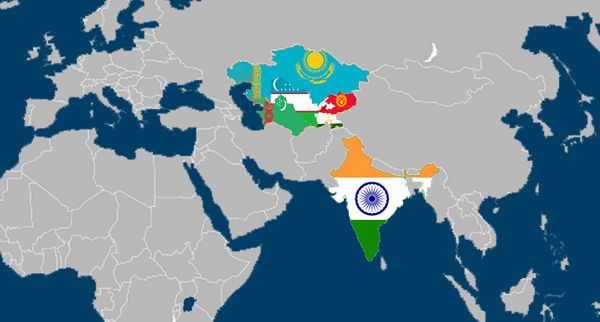- Courses
- GS Full Course 1 Year
- GS Full Course 2 Year
- GS Full Course 3 Year
- GS Full Course Till Selection
- MEP (Mains Enrichment Programme) Data, Facts
- Essay Target – 150+ Marks
- Online Program
- GS Recorded Course
- NCERT- First Ladder
- Polity
- Geography
- Economy
- Ancient, Medieval and Art & Culture AMAC
- Modern India, Post Independence & World History
- Environment
- Governance
- Science & Technology
- International Relations and Internal Security
- Disaster Management
- Ethics
- Current Affairs
- Indian Society and Social Issue
- CSAT
- 5 LAYERED ARJUNA Mentorship
- Public Administration Optional
- ABOUT US
- OUR TOPPERS
- TEST SERIES
- FREE STUDY MATERIAL
- VIDEOS
- CONTACT US
The Mustard Oil Shift in India
The Mustard Oil Shift in India

In India, especially in the northern and eastern states, mustard oil is not just another cooking ingredient. It is tied to family, festivals, and food traditions. Whether it’s fried pakoras in a roadside stall in Punjab, pickles stored in the sun in Bihar, or fish curries in Bengal, mustard oil has been a part of our lives for centuries.
Mustard oil has also been used for body massages for newborns, in religious ceremonies, and in Ayurvedic treatments. In ancient Indian texts like the Rigveda and Ayurveda, mustard is mentioned as both food and medicine. This oil represents not just nutrition, but emotion and identity.
But times have changed. Scientific research and food safety standards now ask – is mustard oil really the best? To answer that, we first need to understand:
What Should an Ideal Cooking Oil Have?
Not all oils are equal. The right cooking oil should give energy, support heart health, and be safe even at high heat. According to global guidelines by the World Health Organization and Food and Agriculture Organization, every adult should consume about 30 grams of fat per day from both visible (like oils and butter) and invisible (like grains and pulses) sources.
Here’s what makes a cooking oil ideal:
1. Types of Fat in Oil
Cooking oils contain three kinds of fats:
- Saturated Fats: These are considered bad for health when eaten in large quantities. They can increase harmful fat in the blood and block blood vessels, which increases the risk of heart attacks.
- Monounsaturated Fats: These are healthy fats. They help reduce harmful fats in the blood and promote better heart health.
- Polyunsaturated Fats: These include omega-6 and omega-3 fatty acids. These are essential for the body, meaning we must get them from food. But their balance is important—too much omega-6 and too little omega-3 can cause health problems.
2. Fat Balance
- A healthy oil should have less saturated fat.
- It should have a good mix of monounsaturated and polyunsaturated fats.
- It should not create harmful substances (like trans-fats) when heated.
3. Additional Benefits
- Oils should be rich in vitamins A, D, E, and K, and minerals like calcium and magnesium.
- Oils should contain antioxidants that protect our cells.
- They should remain stable when used for frying or deep cooking.
How Does Mustard Oil Perform?
Mustard oil, especially the type made from rapeseed and Indian mustard seeds, meets many of these conditions.
Why It’s Good:
- It has low saturated fat (less than 10%), which makes it safer for the heart.
- It has a good amount of polyunsaturated fat, including omega-3 and omega-6.
- The omega-6 to omega-3 ratio is 2:1, which is healthier than oils like soybean that have a poor ratio of 8:1.
- It has a high smoke point (240–250°C), so it doesn’t break down easily during frying.
- It contains plant sterols and vitamin E, which help protect against heart diseases.
Compared to other oils:
- Coconut and palm oils have very high SFAs (up to 91% and 51% respectively)
- Sunflower, corn, soybean oils have high PUFAs but poor Omega-3 content and degrade easily at high temperatures
- Olive oil, although rich in MUFAs, lacks sufficient Omega-3 and is less suited to Indian frying
So mustard oil seems ideal. But there’s one issue: erucic acid.
What is Erucic Acid and Why Is It a Problem?
Mustard oil in India mostly comes from the rapeseed-mustard family, which includes:
- Indian mustard (Raya or Laha)
- Toria
- Brown and yellow sarson
- Gobhi sarson (used in hybrid breeding)
- Taramira
These crops are grown in India’s cooler regions and form a major part of our oilseed economy.
The Issue: Erucic Acid
Traditional rapeseed-mustard oil contains 40–50% erucic acid. Erucic acid is a monounsaturated fatty acid. In small amounts, it is not dangerous, but in large amounts, it can:
- Cause thickening of heart tissues (myocardial fibrosis)
- Lead to fat deposits in organs, especially in children
- Increase the risk of heart-related problems
Most developed countries do not allow any cooking oil that has more than 2% erucic acid. So Indian mustard oil cannot be exported for consumption to countries like the US, Canada, EU, Australia, or Japan.
The Canola Shift
To solve this issue, In 1974 Canada created a special variety of rapeseed-mustard called Canola.
The word Canola comes from “Canadian oil, low acid.”
What Makes Canola Better?
- Erucic acid is below 2%, which is safe for health.
- It has more monounsaturated fats (up to 67%), which support heart health.
- It has good levels of omega-3 and omega-6.
- It has less saturated fat than olive oil.
- It stays stable at high temperatures and is suitable for cooking and frying.
Because of this, Canola oil is now used in over 40 countries for cooking. Rapeseed that doesn't meet Canola standards is only used for biofuels and animal feed in those countries. Even Indian farmers has been growing canolian mustard seeds in some areas like Himachal pradesh , Jammu Kashmir , Punjab and Rajasthan.
The 1990s: Government Allowed Mixing of Oils – Which Became a Problem
In the 1990s, India was producing enough mustard oil, but scientists and health experts raised concerns that the traditional mustard oil contained high levels of erucic acid, which could be harmful if consumed regularly.Because of these health concerns, the Indian government allowed the blending of mustard oil with other vegetable oils like palm oil, soybean oil, and cottonseed oil. This blending was meant to reduce the health risks associated with pure mustard oil and provide consumers with safer options.
However, this blending also led to some problems
- Companies began mixing mustard oil with unsafe or poor-quality oils.
- People in several states fell ill with a disease called dropsy, caused by consuming adulterated oil.
- Dropsy causes swelling in the body, pain, and even death in severe cases.
- Trust in mustard oil dropped sharply.
To control these problems, the Food Safety and Standards Authority of India (FSSAI) started regulating the blending of edible oils in 2006. FSSAI set strict rules to ensure that the oils being sold were safe and of good quality, aiming to protect consumers from harmful adulteration. But still the issue persists that why in 2021 fssai banned blending of mustard oil
FSSAI Ban on Blending
In 2021, the Food Safety and Standards Authority of India (FSSAI) banned blending of mustard oil with other oils.
This decision had two key outcomes:
- Consumers were protected from health hazards of adulterated oil.
- Farmers benefitted—demand for pure mustard oil increased, and they received better prices.
India’s Plan: GM Mustard and the DMH-11 Hybrid
To reduce edible oil imports and improve oil quality, Indian scientists created a genetically modified (GM) mustard hybrid called DMH-11.
What Is DMH-11?
- It is made by crossing Indian mustard with a foreign variety.
- It is expected to increase yields by 25–30%.
- It could help develop low-erucic acid mustard in India, like Canola.
In 2022, India’s biotech body allowed limited field trials of DMH-11.
Supreme Court’s Objection: Is GM Mustard Safe?
However, many groups opposed it:
- Environmentalists feared it might harm bees and natural crops.
- Farmers feared loss of seed control and corporate dominance.
- Scientists demanded more safety trials.
In August 2023, the Supreme Court stopped further release of DMH-11 and asked for:
- More safety data
- Environmental impact studies
- Public consultation
The court followed the precautionary principle: safety first, especially with food crops.
Current Status: What Is India Doing Now?
- India still depends heavily on imported edible oils. We import over 60% of our oil needs, mainly:
- Palm oil from Indonesia and Malaysia
- Soybean and sunflower oil from Argentina, Brazil, and Ukraine
- Palm oil from Indonesia and Malaysia
- The government wants to reduce imports by promoting oilseed farming, including mustard, groundnut, soybean, and safflower.
Why Don’t Indian Farmers Grow Canola?
- Canola requires a cooler climate, which limits where it can grow in India.
- Seeds are expensive, and farmers need training.
- No strong market or government incentives are available yet.
- As of now, only a small amount of Canola-grade mustard is grown in Punjab , Himachal Pradesh , Rajasthan and Jammu Kashmir.
Conclusion
Mustard oil is a powerful symbol of Indian food and tradition. But the health risks from erucic acid, combined with high dependence on oil imports, have pushed India to rethink its oil strategy.
The question is: Can we modernize without losing our roots?
India stands at a crossroad:
- Continue with traditional mustard oil and find ways to make it safer?
- Or shift towards Canola and GM mustard to improve health and reduce imports?
The final answer must come with science, safety, farmer support, and respect for public choice.




